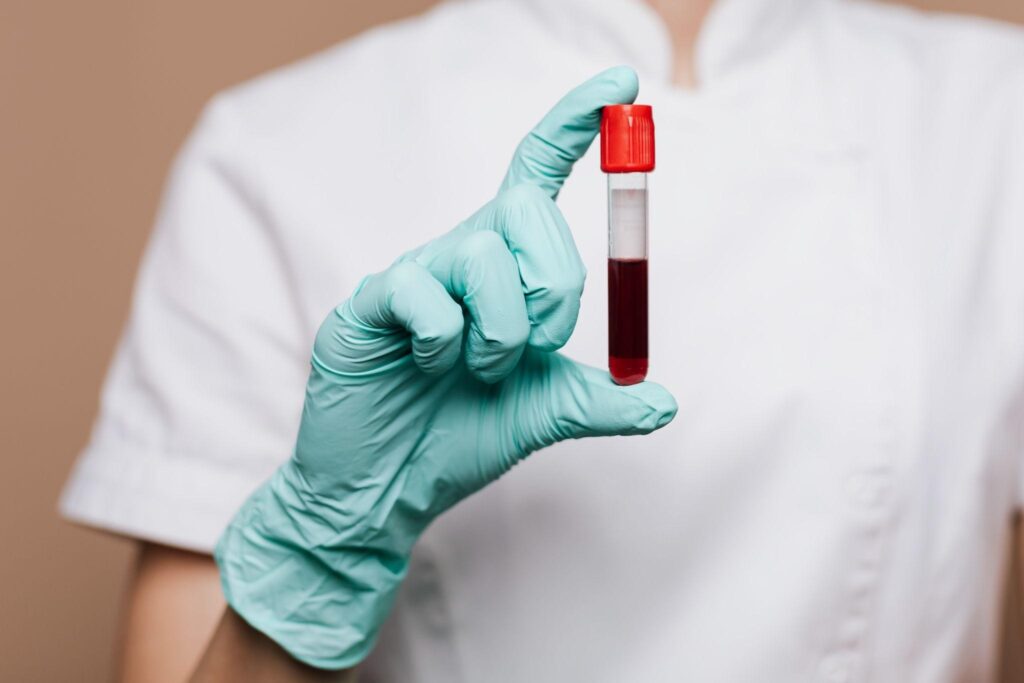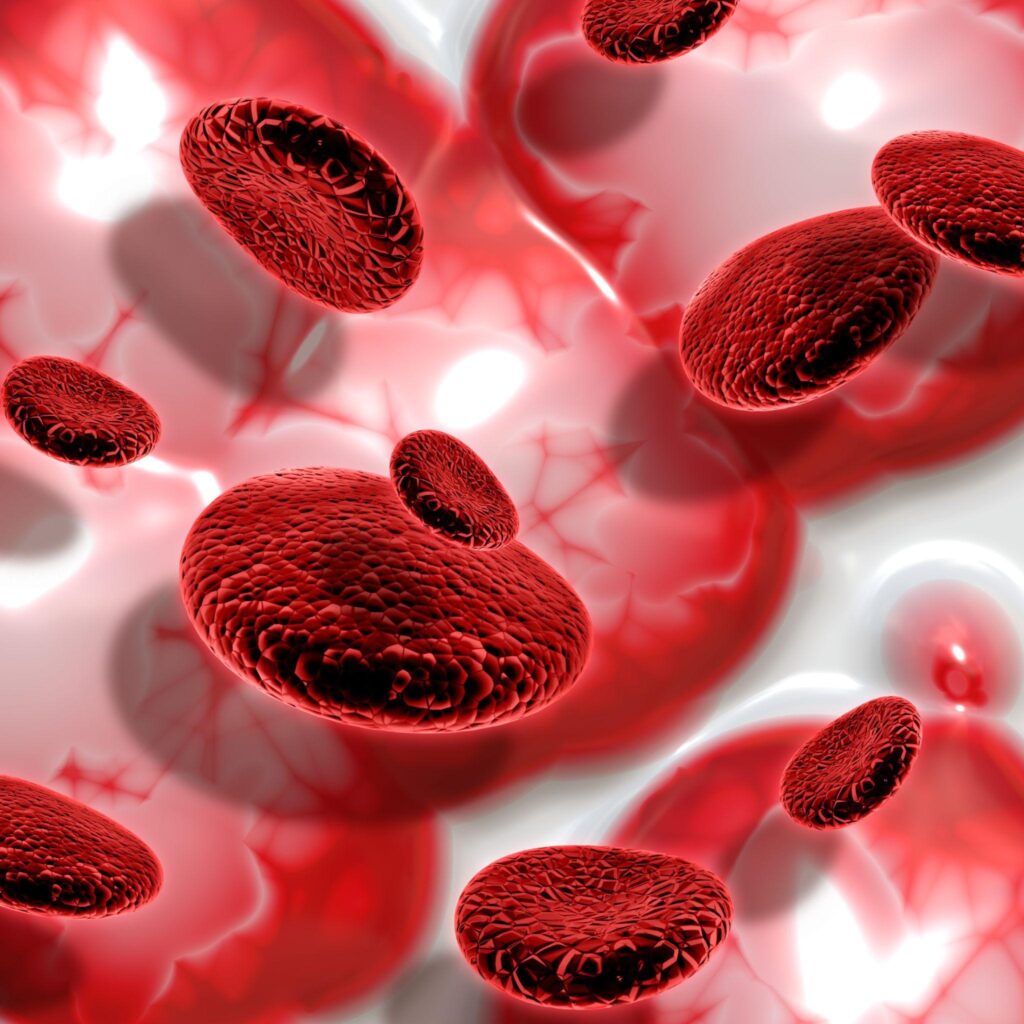Last updated on May 21st, 2025 at 12:47 pm
 Normal Hemoglobin Level in Female: The normal range of hemoglobin levels can vary slightly depending on factors such as age, altitude, and individual health conditions. However, for adult females, the typical range of hemoglobin levels is approximately 12 to 16 grams per deciliter (g/dL) of blood. This range may slightly vary in different laboratories and medical guidelines, but it serves as a general reference point for assessing hemoglobin levels in females.
Normal Hemoglobin Level in Female: The normal range of hemoglobin levels can vary slightly depending on factors such as age, altitude, and individual health conditions. However, for adult females, the typical range of hemoglobin levels is approximately 12 to 16 grams per deciliter (g/dL) of blood. This range may slightly vary in different laboratories and medical guidelines, but it serves as a general reference point for assessing hemoglobin levels in females.
Hemoglobin, often abbreviated as Hb, is a vital protein found in red blood cells (RBCs) that carries oxygen from the lungs to tissues throughout the body. It plays a crucial role in maintaining overall health and well-being. In females, understanding the normal range of hemoglobin levels is essential as it can indicate various health conditions and help in preventive healthcare measures.
Normal Hemoglobin Level in Female
Normal hemoglobin levels can vary across different age groups due to physiological changes that occur throughout a woman’s life span. Here’s an elaboration on normal hemoglobin levels by age in females:
Infancy and Childhood (0-12 years)
In newborns, hemoglobin levels are typically higher, ranging from 14 to 20 g/dL shortly after birth, gradually decreasing to around 11 to 13 g/dL by the age of six months.
During infancy and childhood, hemoglobin levels continue to decrease slightly, with the normal range being approximately 11 to 13 g/dL by the age of one year and stabilizing around 11 to 12 g/dL throughout childhood.
Adolescence (13-18 years)
During puberty, hemoglobin levels in females may increase due to growth spurts and changes in hormonal balance.
The normal range of hemoglobin levels during adolescence is similar to that of adult females, ranging from approximately 12 to 16 g/dL.

Reproductive Years (19-50 years)
In reproductive-age females, hemoglobin levels can be influenced by factors such as menstrual blood loss, pregnancy, and hormonal fluctuations.
The normal range of hemoglobin levels for adult females is typically between 12 to 16 g/dL, with variations depending on individual factors such as menstrual cycle regularity and iron status.
Pregnancy
During pregnancy, hemoglobin levels tend to decrease slightly due to hemodilution, where the plasma volume expands more rapidly than the increase in red blood cell mass.
The normal range of hemoglobin levels during pregnancy is around 10.5 to 14 g/dL in the first trimester, 10 to 13.5 g/dL in the second trimester, and 10 to 13 g/dL in the third trimester.
Perimenopause and Menopause (Late 40s to Early 50s)
As women approach perimenopause and menopause, hormonal changes can affect hemoglobin levels.
Hemoglobin levels may remain within the normal adult range of 12 to 16 g/dL during perimenopause and menopause unless influenced by other factors such as underlying health conditions or nutritional deficiencies.
Postmenopausal Years (After 50 years)
After menopause, hemoglobin levels typically stabilize and remain within the normal adult range, provided there are no underlying health issues.
Regular monitoring of hemoglobin levels is recommended in postmenopausal women to detect and manage any abnormalities that may arise due to age-related changes or other health conditions.

Implications of Abnormal Hemoglobin Levels
Abnormal hemoglobin levels can indicate various underlying health conditions or nutritional deficiencies. Here are some implications of abnormal hemoglobin levels in females:
Anemia: Low hemoglobin levels (below the normal range) can indicate anemia, a condition characterized by a deficiency of red blood cells or hemoglobin in the blood. Anemia can result from nutritional deficiencies (such as iron, vitamin B12, or folate deficiency), chronic diseases, blood loss (due to menstruation or other causes), or bone marrow disorders. Symptoms of anemia may include fatigue, weakness, pale skin, dizziness, and shortness of breath.
Polycythemia: High hemoglobin levels (above the normal range) can indicate polycythemia, a condition characterized by an excess of red blood cells in the blood. Polycythemia can be primary (due to bone marrow disorders) or secondary (resulting from factors such as chronic hypoxia, smoking, or certain medical conditions). Symptoms of polycythemia may include headache, dizziness, itching, and redness of the skin.
Underlying Health Conditions: Abnormal hemoglobin levels may also be associated with underlying health conditions such as kidney disease, liver disease, thyroid disorders, or chronic inflammatory diseases. Monitoring hemoglobin levels can help identify and manage these underlying conditions effectively.
> Consult a Doctor and Medkart will help you Order Medicines Online
Conclusion:
Understanding normal hemoglobin levels in females is essential for assessing overall health and identifying potential health issues. Regular monitoring of hemoglobin levels through blood tests can help detect abnormalities early and facilitate timely intervention and treatment.
Maintaining a balanced diet rich in iron, vitamins, and minerals is crucial for supporting optimal hemoglobin levels and overall well-being. Consultation with healthcare professionals is recommended for proper evaluation and management of abnormal hemoglobin levels and associated health conditions.
Read: What are Generic Medicines?
FAQs on Normal Hemoglobin Level in Female
Q1. What is the Normal Hemoglobin Level in Female?
The normal range of hemoglobin levels for adult females is typically between 12 to 16 grams per deciliter (g/dL) of blood.
Q2. What factors can influence hemoglobin levels in females?
Hemoglobin levels can be influenced by factors such as age, altitude, menstrual cycle (due to blood loss during menstruation), pregnancy (hemodilution), nutritional status (iron deficiency), and underlying health conditions.
Q3. What are the potential consequences of having abnormal hemoglobin levels?
Abnormal hemoglobin levels can indicate health issues such as anemia (low levels) or polycythemia (high levels), which can lead to symptoms like fatigue, weakness, shortness of breath (anemia), or headache, itching (polycythemia). Monitoring and managing hemoglobin levels are crucial for maintaining overall health and well-being in females.
Related Links: